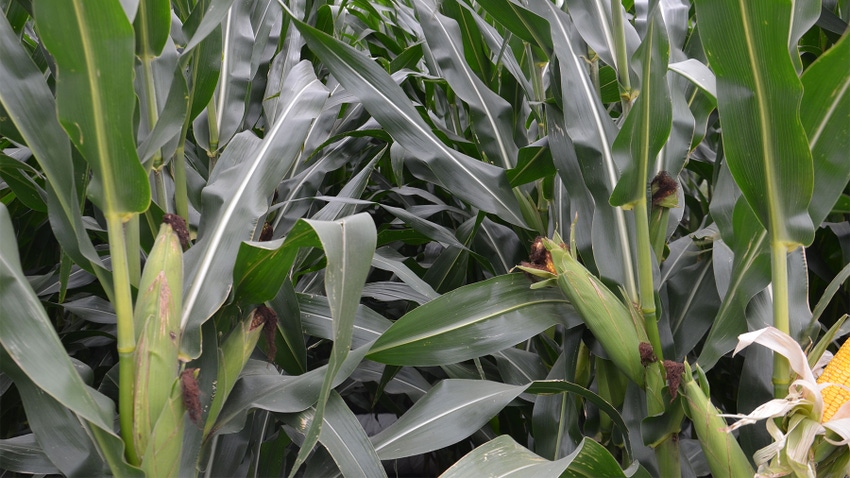
The ancestor of modern corn produced multiple ears. But it produced them in a formation like a bouquet, with only a minimal number of viable kernels per year. Today’s modern corn is geared to produce multiple ear shoots at different nodes. Typically, only one of those ears, and sometimes two, develop into ears with kernels.
“Remember that the corn plant has one primary goal, and it’s not making you the most profit,” says Dave Nanda, director of genetics for Seed Genetics Direct, sponsor of Corn Watch ’23. “It wants to make as many viable babies as possible. The plant is all about producing progeny. It doesn’t know that seeds produced by hybrids won’t be planted.
“Sending out multiple ear shoots — one at the primary node and then shoots at nodes below it — is a type of defense mechanism. If something happens to the top, primary ear, the ear at the secondary node, the secondary ear, can develop and still produce viable progeny for the plant,” he explains.
Nanda says he has seen plants produce ear shoots with silks at several nodes below the primary ear. Sometimes a secondary shoot will even attempt to form on the same node as the primary ear.
“That’s not really something you want to see,” he says. “It simply pulls resources away from the main ear, and the secondary shoot will not produce kernels to contribute to yield.”
One ear vs. two
So, what does Nanda think about the one ear vs. two ears per stalk debate? “With today’s hybrids, my preference is to see each plant produce one large ear per plant, well filled to the tip with kernels,” Nanda says. “That’s usually when you will find maximum yield per acre.
“If it is a good year weatherwise and there are plenty of nutrients available, you may see many plants attempting to make a second ear. But if it turns dry or some other stress develops, it may abort that ear or abort kernels on that ear. Often, if a second ear does develop and mature, it is a smaller ear.”
What you don’t want to see, Nanda says, are plants under stress aborting kernels not only on a second ear, but also on the primary ear. Because tip kernels are pollinated last, they are the first to abort if conditions deteriorate and the plant realizes it can’t make as many viable babies as it planned.
“You can tell the difference between ovules on the cob that were never fertilized and kernels that began to form but were aborted,” Nanda says. “The aborted kernels will leave a thin carcass behind. Often you can determine when conditions deteriorated by determining whether tip kernels never pollinated, or if they pollinated but were later aborted by the plant.”
About the Author(s)
You May Also Like




